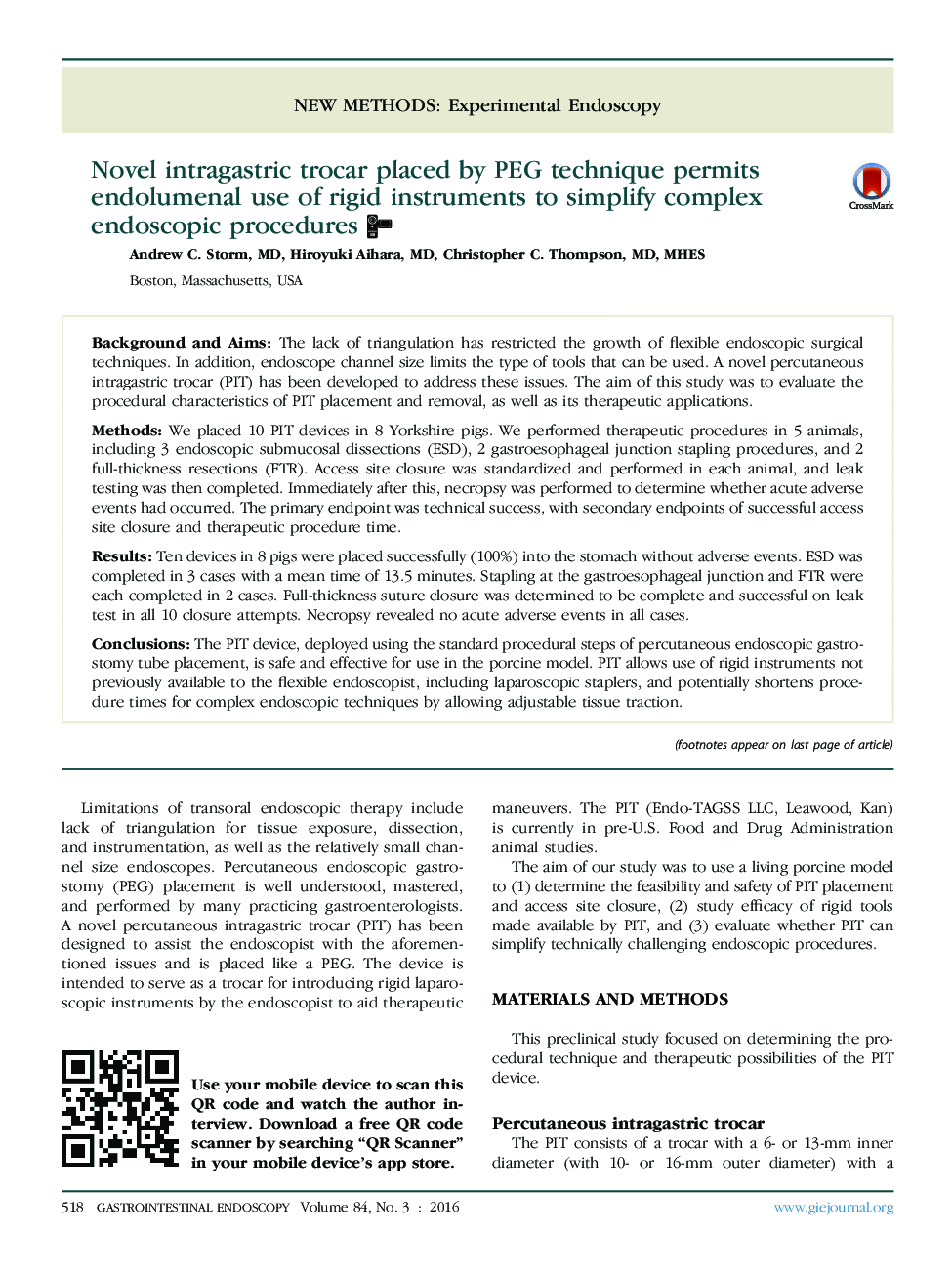| Article ID | Journal | Published Year | Pages | File Type |
|---|---|---|---|---|
| 3301885 | Gastrointestinal Endoscopy | 2016 | 5 Pages |
Background and AimsThe lack of triangulation has restricted the growth of flexible endoscopic surgical techniques. In addition, endoscope channel size limits the type of tools that can be used. A novel percutaneous intragastric trocar (PIT) has been developed to address these issues. The aim of this study was to evaluate the procedural characteristics of PIT placement and removal, as well as its therapeutic applications.MethodsWe placed 10 PIT devices in 8 Yorkshire pigs. We performed therapeutic procedures in 5 animals, including 3 endoscopic submucosal dissections (ESD), 2 gastroesophageal junction stapling procedures, and 2 full-thickness resections (FTR). Access site closure was standardized and performed in each animal, and leak testing was then completed. Immediately after this, necropsy was performed to determine whether acute adverse events had occurred. The primary endpoint was technical success, with secondary endpoints of successful access site closure and therapeutic procedure time.ResultsTen devices in 8 pigs were placed successfully (100%) into the stomach without adverse events. ESD was completed in 3 cases with a mean time of 13.5 minutes. Stapling at the gastroesophageal junction and FTR were each completed in 2 cases. Full-thickness suture closure was determined to be complete and successful on leak test in all 10 closure attempts. Necropsy revealed no acute adverse events in all cases.ConclusionsThe PIT device, deployed using the standard procedural steps of percutaneous endoscopic gastrostomy tube placement, is safe and effective for use in the porcine model. PIT allows use of rigid instruments not previously available to the flexible endoscopist, including laparoscopic staplers, and potentially shortens procedure times for complex endoscopic techniques by allowing adjustable tissue traction.
